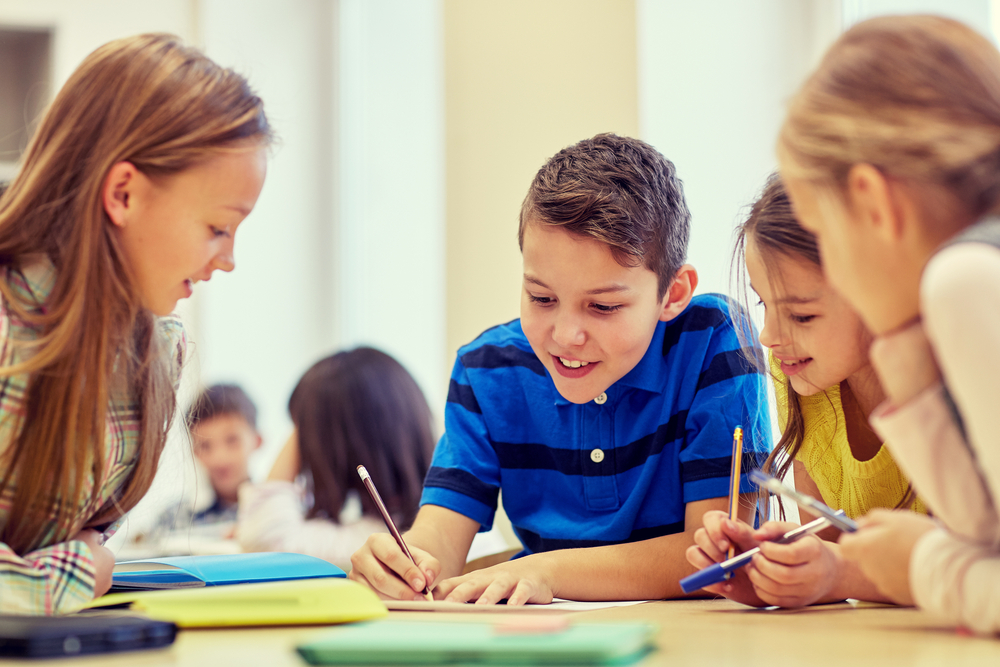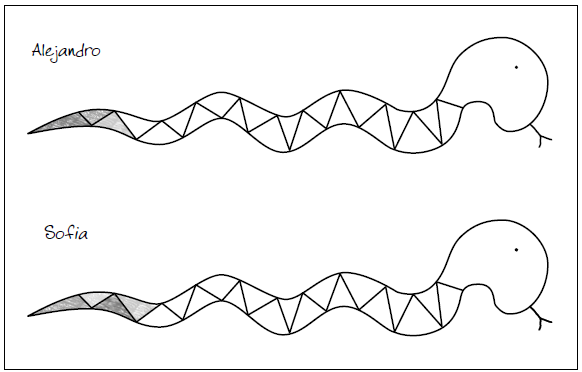 I have been teaching a group of young teenagers of very mixed levels and ages for six months now. Half of the group comes from the state-school system and the other half attend “an alternative school”. The latter group is one-three years younger and was the weakest one in terms of language knowledge at the beginning of the year. These children were weak elementary while the rest strong pre-intermediate/intermediate. I was even wondering whether they would be able to cope emotionally with the fact that the rest of the class coming from a state-school background is so much stronger.
I have been teaching a group of young teenagers of very mixed levels and ages for six months now. Half of the group comes from the state-school system and the other half attend “an alternative school”. The latter group is one-three years younger and was the weakest one in terms of language knowledge at the beginning of the year. These children were weak elementary while the rest strong pre-intermediate/intermediate. I was even wondering whether they would be able to cope emotionally with the fact that the rest of the class coming from a state-school background is so much stronger.
As time went by, however, the children who were seemingly behind caught up at an amazing speed. They were very good at using soft skills such as really listening to the teacher and to each other. They asked questions with confidence if they got stuck. They were able to work out answers for themselves by observing the clues carefully. I also watched them constantly use colors to highlight, to make mind-maps, and to make beautiful drawings in their notebooks to accompany their newly learnt language without having to draw their attention to these learning strategies. Their notebooks are not ordinary ones with the answers of exercises, lists of words and occasional grammar tables, but they look more like living books that you would want to open again and again to look at. And of course, I sometimes witnessed their frustration as well, but I saw their strategies of handling these emotions successfully too.
‘… the children who were seemingly behind caught up at an amazing speed.’
These children have learnt something important that we all need in this rapidly changing world, and these are skills that allow them to adapt to new situations, new contexts, new people, and new tasks easily. Possessing vast knowledge – most of which computers provide us with in fractions of seconds anyway – does not give us enough support in being able to rise up to new challenges at this speed. Instead we need the soft skills and learning skills that equip us with the necessary flexibility.
What are these skills? How can they be developed? From the example above – just as, I am sure, we can all list such examples from our lives – these questions have obvious answers. But it feels harder to teach these skills instead of a set of new words or a new language point as they are less tangible.
Essential skills for primary children
So what is it that children need to learn in the primary school? According to Em?ke Bagdy, a renowned Hungarian clinical psychologist, at this age children need to learn the following things: To read, to write, to count, and to be confident. They need to develop a sense of self-belief that they can do it. If this fails, according to E. Bagdy, children will struggle with their learning, in managing new situations at school, and in their life as adults. This is also supported by the PISA report (Programme for International Student Assessment) that has found that learners’ belief in their own efficacy is the strongest single predictor of whether they will adopt strategies that make learning effective or not (Artelt et al., 2003, pages 33–34).
One of the key things that influence children’s confidence is our own view of them as individuals and of their abilities. It is important to approach every single child believing that they can do it. A simple idea to do this is to catch them being good, something that can be easily done with the help of the Snakes poster – see below.
Snake Poster.

Draw one snake for every child in the class and label each one with a student’s name. Make sure the body of each snake is divided into lots of triangular sections. Each time a student does something praiseworthy (e.g. makes a helpful comment, shows determination, waiting patiently for their turn, etc.), tell them to come out and colour in one section of their snake with a pen of their choice.
Mixed-ability teaching, Edmund Dudley, Erika Osváth, OUP, 2016
Of course, we need to make sure that children progress with the colouring in their snakes approximately at similar speeds to avoid any feelings of shame, which would definitely be detrimental. Feeling good about oneself has an immense motivational power at any age, but it is imperative in the primary classroom.
Another important teaching moment that has a great impact on children’s self-confidence is our way of dealing with mistakes. In my view, there are no mistakes made in the primary classroom, but rather opportunities for children to notice something that is different or new in terms of use of words, language chunks, spelling, etc. For example, if children are copying words in their notebook from the board and there are some spelling errors, rather than overwriting these in red by the teacher, it’s a good idea to encourage children to look at the board again and discover the differences for themselves.
Naturally, there are many more soft-skills that need to be developed at this age so that children become efficient learners, such as resilience, curiosity and collaboration.
Have an idea of your own? We’d love to see it, so do share it below in the comments!
Erika Osvath is a freelance teacher, teacher trainer, materials writer and co-author of the European Language Award-winning 6-week eLearning programme for language exam preparation. She worked for International House schools in Eastern and Central Europe as a YL co-ordinator, trainer, and Director of Studies. She regularly travels to teach demonstration lessons with local children, and do workshops for teachers. Erika is co–author with Edmund Dudley of Teaching Mixed Ability.
References:
Artelt, C., Baumert, J., Julius-McElvany, N. and Peschar, J. (2003). Learners for life: student approaches to learning. Organisation for Economic Co-operation and Development. Available at: https://www.oecd.org/education/school/programmeforinternationalstudentassessmentpisa/33690476.pdf Accessed 15/2/18.
For Bagdy Em?ke, see: https://bagdyemoke.hu/beszelgetesek-emokevel/
Dudley, E. and Osváth, E. (2016). Mixed-ability teaching. Oxford: OUP.


This article is hugely important and interesting. It is really really important to provide learners with some time to discover and fix their mistakes.
Hi Ali,
Thank you for your comment. As you said, it is very important that we, teachers direct children to find the differences between what they wrote or said and what they see written in the book or hear from the CD, for example, rather than highlighting them and labelling these as ‘mistakes’. The way we perceive these will definitely have a great impact on the reaction of the children. If we see them as part of learning, rather than something that is ‘wrong’, children will be encouraged to look out for self-correction as a natural thing to do and will stay confident that they can do it.
Erika
Thank you for this! I love your ideas, particularly the snake and letting kids fill it out themselves.
Hi Susan,
I’m glad you like them. Hope to see you at the webinar for even more ideas :-).
Erika
Erika Osvath has given very practical , doable and effective mantras to use in primary classroom. Heading preprimary section, I can use it for my Nur. and Prep classes too. The only difference is that I will ask them to colour a crown or a star with many triangles as Erika has suggested.
Thanks for sharing these brilliant ideas.!
Hi Sunitarajiv,
What a great idea to use a crown! Thank you for adding your suggestion. I will definitely borrow it quoting your name, if you don’t mind.
Erika
Thank you for the wonderful webinar, Erika.
You are very welcome, Revangel 🙂 It was nice to have you in the webinar!